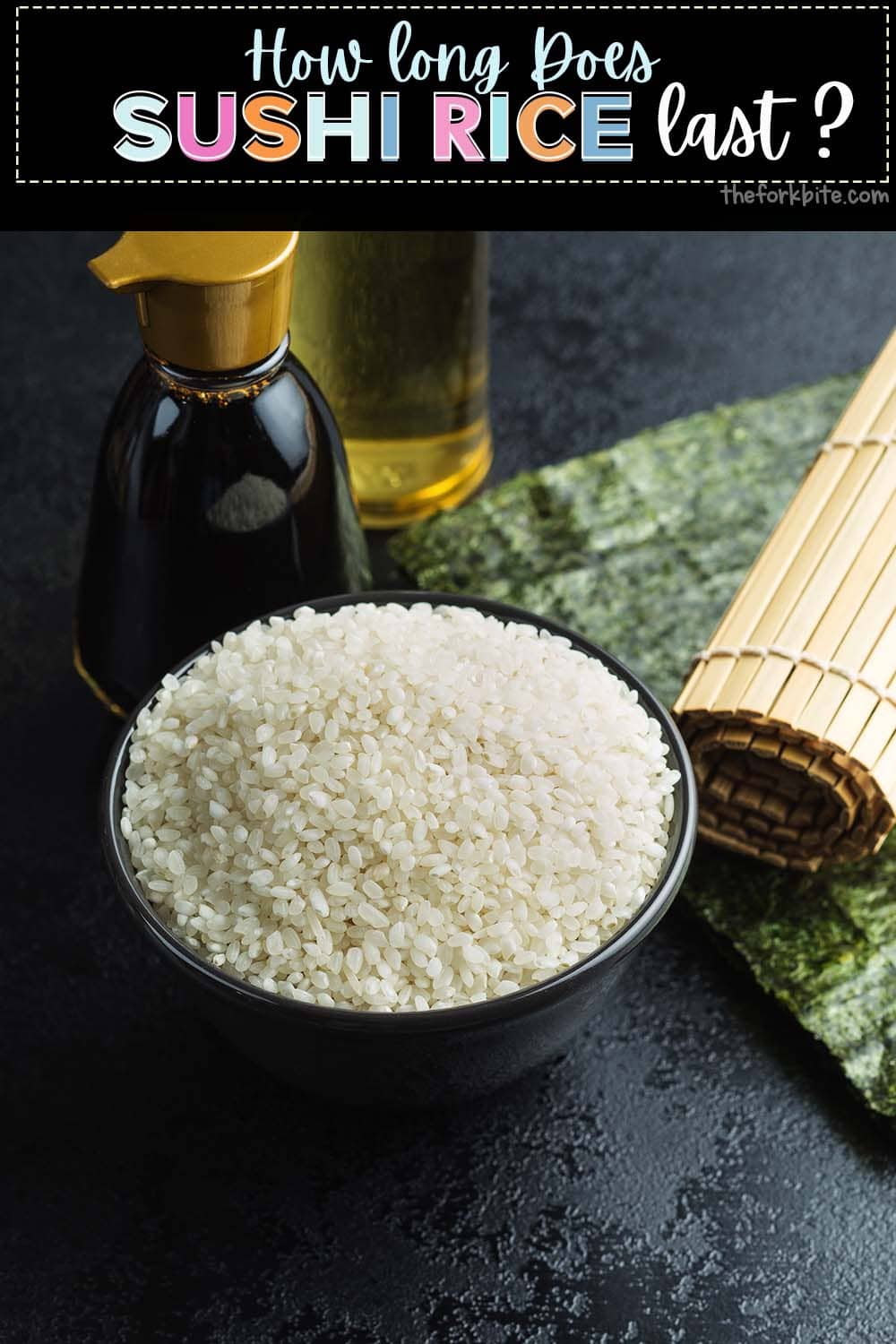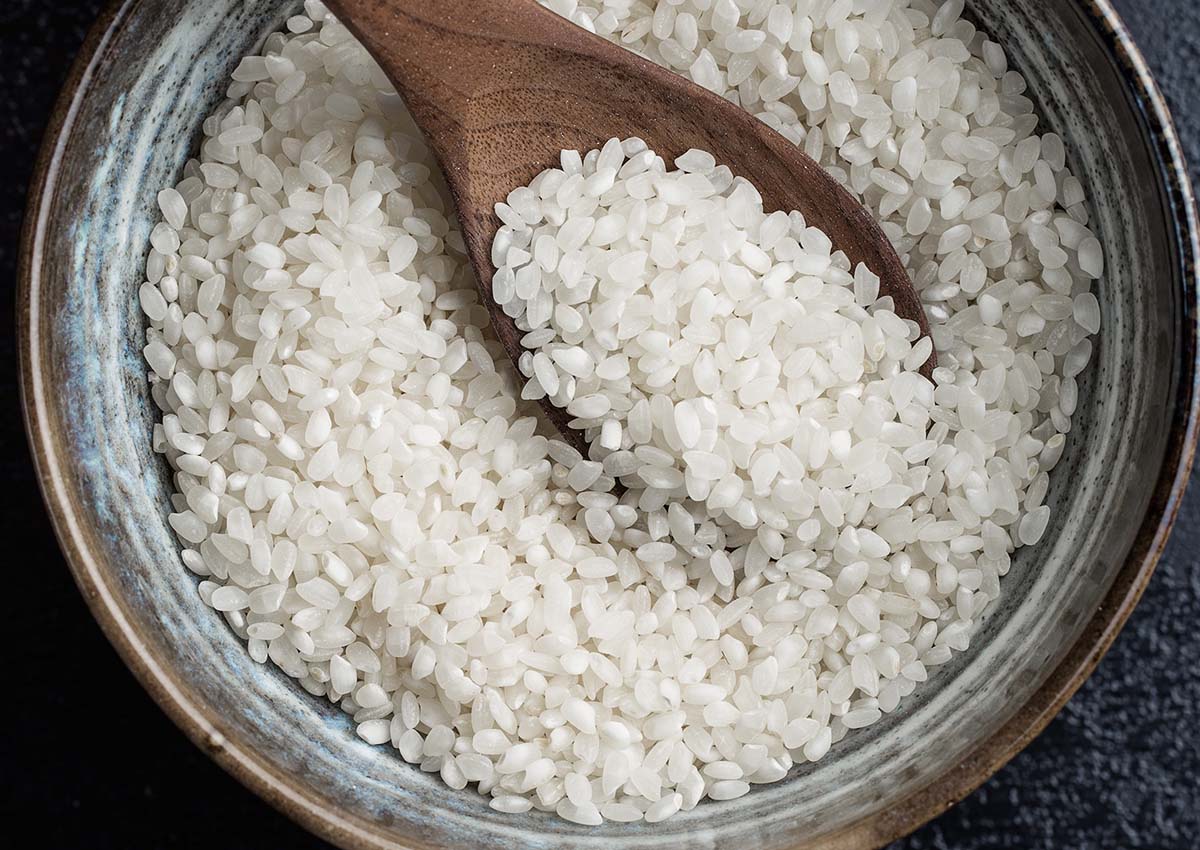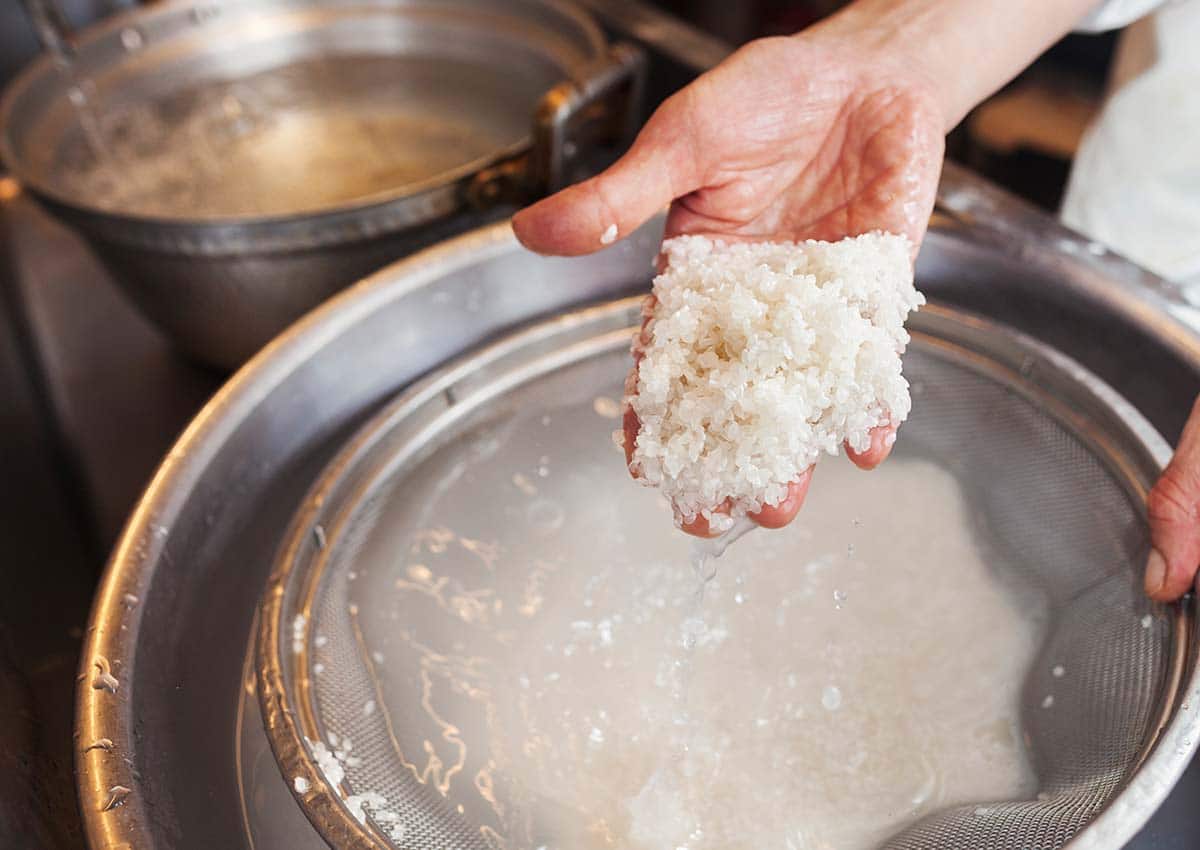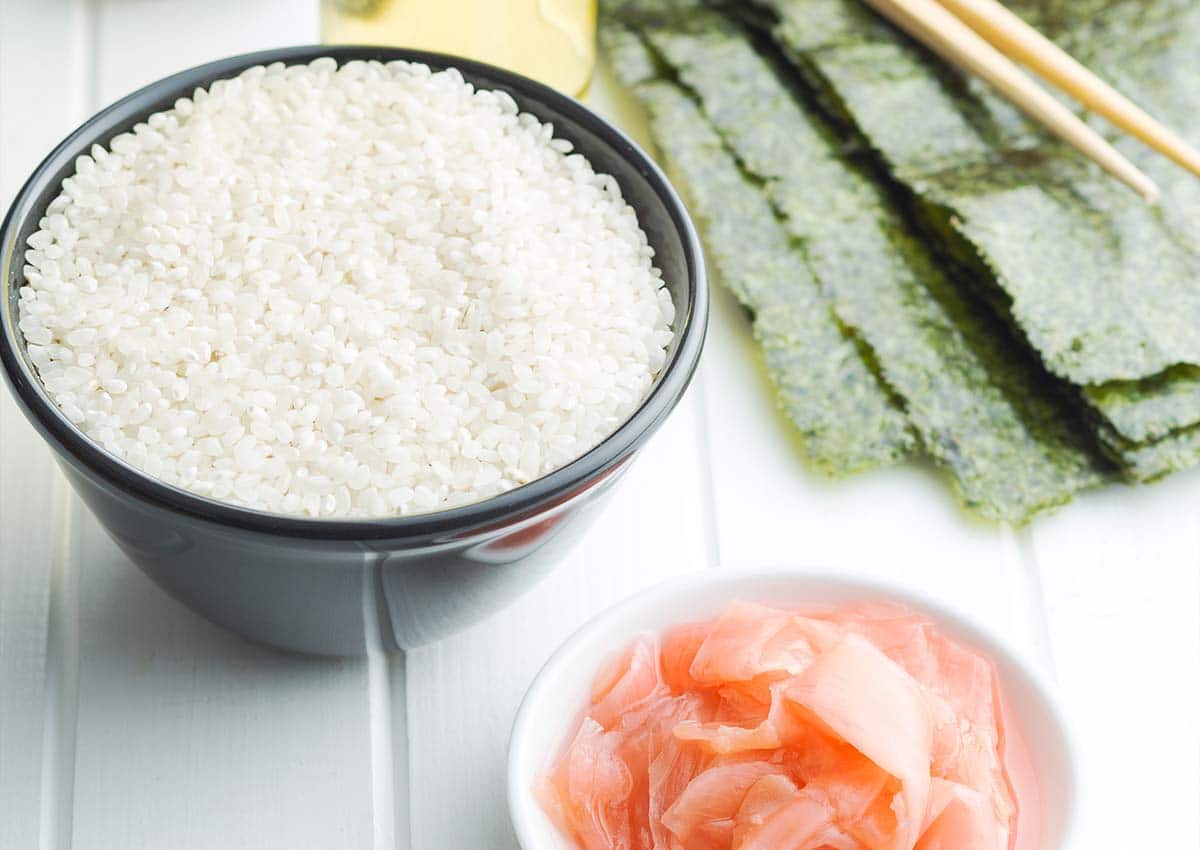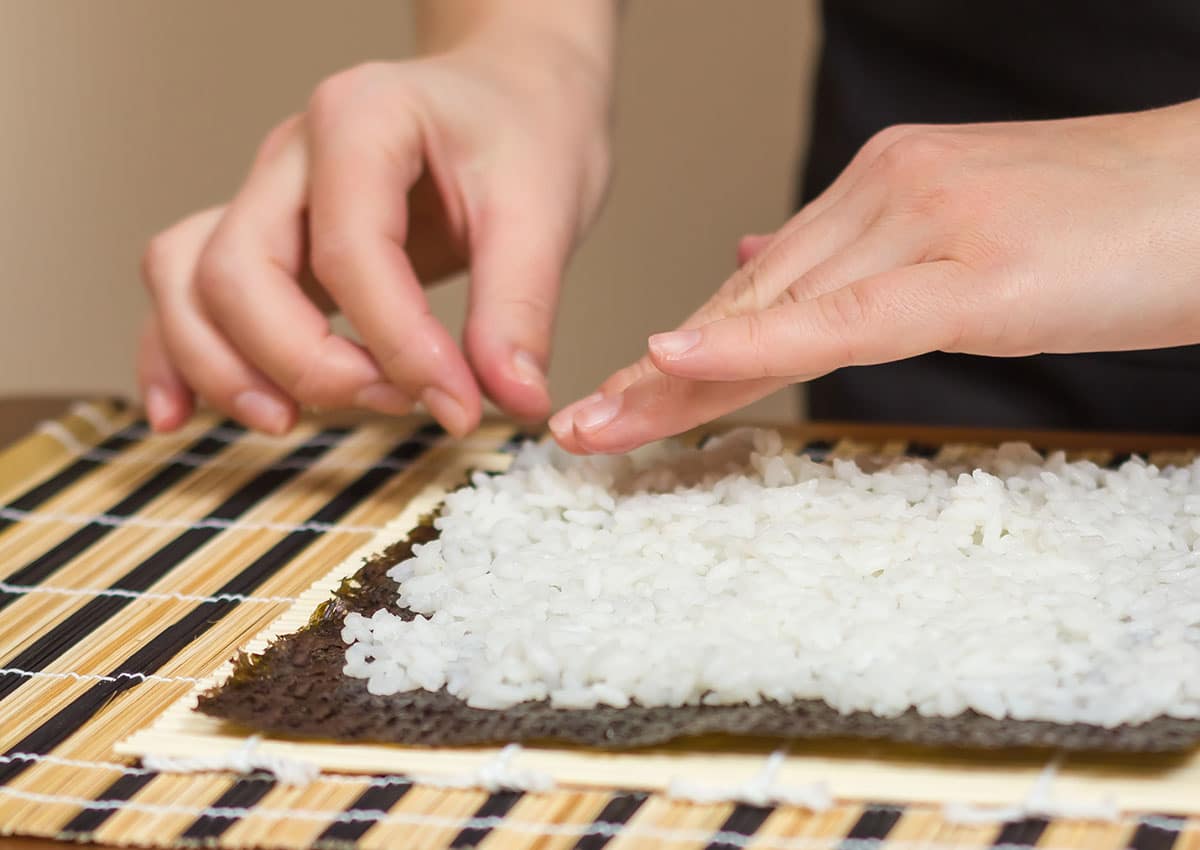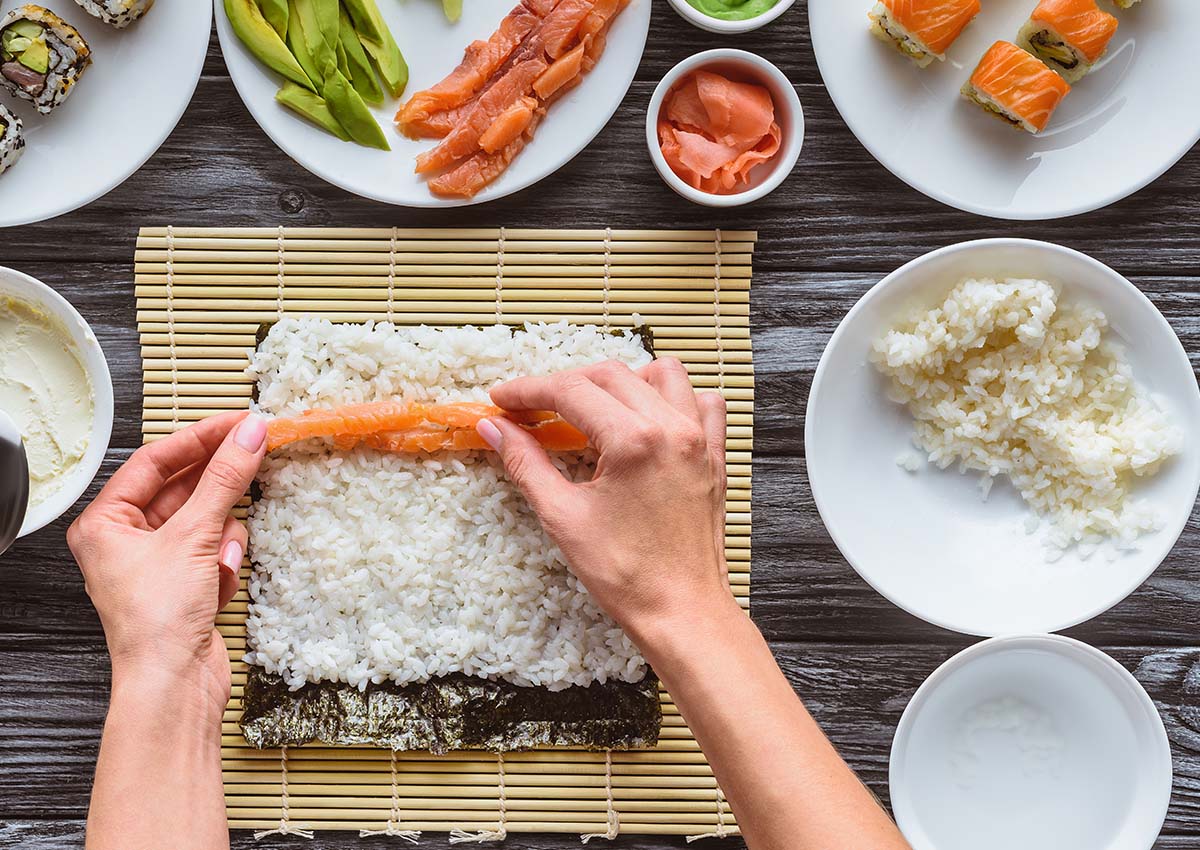There's no doubt that sushi is best when it is eaten fresh, but it is not always possible for one reason or another.
It might leave you wondering whether or not sushi rice has an expiry date and for how long you might be able to keep it.
Of course, it all depends on what you mean by sushi rice expiring. If you're referring to sushi rice that has already been cooked, yes, it will have an expiry date.
Jump to:
Once cooked, sushi rice can last anywhere from a few hours to several days. It hinges on whether it is stored, chilled, or frozen.
Raw, uncooked sushi rice remains safe to eat for years if stored correctly. However, if you store it in the wrong way, it will spoil.
What type of rice is Sushi rice?
The words "sushi rice" are something of a misnomer. It could lead you to the misconception that it is a variety of rice. However, that is not the case.
It is a preparation of rice.
Sushi rice is made by mixing cooked short-grain Japanese white rice while still hot, with salt, sugar, and vinegar.
On occasion, short-grain brown rice is used instead of white.
Once cooked and allowed to cool, this rice type is then used to make sushi rolls.
To add a little confusion into the picture, you'll sometimes find packets of rice labeled "sushi rice" on the shelves in stores and supermarkets.
They will contain short-grain Japanese rice for sure.
Japanese short-grain rice contains more starch than other varieties, making the rice grains stick together when cooked, which is exactly what you want when making sushi rolls.
You can, of course, eat this rice plain, a little like "sticky rice," or you can add the salt, sugar, and vinegar seasonings to turn it into rice perfect for constructing sushi rolls.
For this article, we will continue to refer to this type of rice as "sushi rice," as it is convenient to do so, and you all now know what I'm referring to.
How long does sushi rice last?
- White sushi rice can be kept virtually indefinitely in your pantry in its uncooked state, providing it is stored in an airtight container.
- Uncooked brown sushi rice can be stored in a cool, dark pantry or cupboard for as long as six months or longer if you wish to freeze it, in which case it will last for up to 2 years.
- Once it is cooked but unseasoned, brown or white sushi rice can be kept in an airtight container in your fridge for 3 to 5 days. Alternatively, you can divide it into portions, store each serving in a freezer bag or freezer-safe container and freeze it for up to 6 months.
- But if it's been cooked and seasoned, should sushi rice, whether brown or white, be used immediately. You can refrigerate it, but it will become dry. I wouldn't advise you to try freezing it because once you defrost it, it becomes too soft for making sushi rolls.
Best way of storing sushi rice - cooked and uncooked
To avoid doubt, when discussing how to store sushi rice correctly, we need to be certain of the form of sushi rice to which we are referring.
Here are the four most common types.
- Uncooked store-bought Sushi type rice
- Home-cooked sushi type rice - unseasoned
- Home-cooked, seasoned (with salt, sugar, and vinegar) sushi type rice
- Formed sushi rolls - Rolled with Nori seaweed and stuffed with various fillings.
The correct way of storing these different formats of sushi rice is dependent on several factors, which include:
- The level of moisture in the atmosphere
- The temperature of the environment in which it is stored
- Levels of contamination
- The storage method employed
- The time for which it is stored
- Exposure
The higher the moisture level, temperature, and risk of contamination, the bigger the chance that the rice will go off.
Inappropriate storage methods will speed up any spoilage, as will the length of time for which the rice is exposed to the atmosphere and variable temperatures.
To talk about the various ways sushi rice is best stored, we need to consider the factors listed above on each of the four different sushi rice formats.
1 Dry, prepacked, and uncooked
This type of sushi rice is the easiest to store as all you need is a clean, dry container and a pleasantly cool environment.
The less humidity in the environment, the better. It's best to keep it away from direct sunlight, but the most important thing of all is to keep it dry.
You must have seen the movie "Gremlins." Well, this takes the same line.
You need to keep the grains dry at all costs. Okay, if it gets wet, the rice not suddenly going to start sprouting Gremlins, but the rice will turn bad quite quickly.
2 Home-cooked but not seasoned
Before we delve any further into this variant of sushi rice, I ought to point out that there are several different ways of cooking rice.
And they all have a specific impact on how long you can keep the rice before it begins to spoil.
I'm going to assume here that you are using a typical rice cooker, and we will start by discussing whether or not you want to cook it for freezing or chilling in your fridge.
If you intend to freeze the rice, you need to get on with it as soon as it's finished cooking.
- While it is still steaming hot, carefully transfer it into a circular glass container; this needs to be covered with an airtight lid.
- Alternatively, you can wrap it with cling film, secure it in place with an elastic band, and put it straight into your freezer.
- Sealing in an airtight container in this way will prevent the formation of ice crystals.
- It's crucial because if crystals get into rice grains, they will ruin their texture, and you will end up with a bowl of mush.
If you intend to chill the rice in your refrigerator, you must first let it cool down after cooking.
- Fluff the grains up and make a space in the middle of the rice before transferring it into the fridge.
- When the rice has cooled down, remove it from the fridge and transfer it into another container such as a circular glass bowl.
- Wrap with cling film, or if the film isn't very clingy, is secured in place with an elastic band and refrigerated for no more than five days.
3 Home-cooked and seasoned
For storing home-cooked and seasoned sushi rice, follow the steps above up to the point where you are about to cover with cling film.
- Before you do so, you need to add salt, sugar, and vinegar.
- Mix the ingredients in well, and then cover with cling film and place into your fridge.
- You don't have to add salt and sugar; if you're happy just adding vinegar, it entirely up to you. It's down to your palate and preference.
- Once refrigerated, the sushi rice needs to be consumed or used within 48 hours. Beyond that, it will start to go off. The reason is you've added moisture and other contaminants into the rice.
Read: Clever Hack to Soften Leftover Sushi
4 Cooked, seasoned, and formed
Last but not least, we have formed rice that has either been rolled or compacted into blocks awaiting toppings.
Forming sushi rice significantly accelerates the spoilage time.
It's also important to ensure that any containers you use are hygienically clean and free from moisture and any contaminants.
Read:
The freshness check
Once the sushi rice has been formed, it needs to be consumed within 12 hours.
Anything beyond that will begin to deteriorate as far as form, odor, taste, and texture are concerned.
If left for as long as 24-hours, it doesn't matter how well it's been wrapped or how clean the containers were that you used; you should bin it.
It might not have spoiled, but you're as close to the danger zone as you want to get. You've just crossed into it.
Why risk food poisoning if you don't have to?
Your sushi might be safe, but then again, it might not be. It's just not worth risking it, especially if serving it to others.
Does uncooked sushi rice go bad?
As I mentioned before, if you visit your local supermarket or Asian grocery store, you will see packets labeled "sushi rice."
But the fact of the matter is that it is never referred to in this way in Japan.
The Japanese only use the term "sushi rice" for rice that has been cooked and seasoned appropriately.
It's only here in the West that rice varieties suitable for turning into sushi are actually labeled as sushi rice.
It's to make it easier for beginners to choose the right product.
- Japanese short-grain white rice in a sealed bag kept in a regular pantry will remain good to use for as long as you care to store it.
- Once the seal has been broached, providing the rice is stored in a suitable container, you can refrigerate or freeze it almost indefinitely.
The most important thing with preventing uncooked sushi rice from going off is to make sure it is free from dust, insects, moisture, or any other contaminants.
However, you should be aware that this indefinite shelf life only relates to varieties of white rice that have been milled and had their outer layers removed.
Keeping it moisture-free is the factor responsible for driving its extended life.
But you can't treat brown rice in the same way.
It's because it has a higher oil content. It means that it will only remain in good condition in your pantry at average room temperature for between three and six months.
If it is packaged or repackaged in vacuum-sealed bags, it can be kept in your fridge between six and twelve months and your freezer for up to 18 months.
More about storing sushi rice
We've already talked about how long you can keep uncooked white sushi rice in your pantry.
It will be fine in its original sealed packaging or an airtight container like a Mason jar or an airtight plastic container.
But I'd like to discuss brown sushi rice a little more. Because it still has its bran and germ, the oils they contain can go off quite quickly.
Storing it in an airtight plastic container or a Mason jar is important as it will help keep the air out, which would otherwise begin the deterioration process.
To increase its shelf life, you should store it in a freezer where the temperature is usually much more stable than it would be in a pantry.
Various types of rice that can be used to make sushi
When you go shopping for rice, you will find that it is sold in three basic varieties - short, medium, and long grain.
These size descriptions are based on the length of a typical grain. Let's see which one works best when it comes to making sushi and why that should be.
1 Long-grain variety
Long-grain rice has milled grains. Proportion wise they are 3 to 4 times longer than their width.
Their specific starch content means that they are light and fluffy after cooking.
It's not advisable to try using long grain rice for sushi because it doesn't have the necessary starch or stickiness to form and retain a shape.
Instead, each grain will separate. Not what you want when trying to make sushi.
2 Medium-grain variety
By comparison, medium-grain rice is shorter than its long grain cousin, and its kernel is broader.
When it's cooked, the grains remain tender and moist and do have a propensity to stick together.
If you can't find any short-grain rice, you can use a brand of medium grain like Calrose. You'll be able to form sushi shapes that will be edible, though not the best.
3 Short-grain variety
This is the business, thanks to its particularly sticky texture.
The grains themselves are short in length and have a plump shape.
Because they contain more moisture, they are stickier than other varieties when cooked.
When you come across packages labeled "sushi rice," whether in a supermarket or Asian grocery stores, they are sure to contain short-grain rice.
The best brand you can buy is Koshiharikari. But you may choose another brand. We all have our individual preferences.
The key is the flavor, the texture, the rice's stickiness, and its freshness.
Another of the best brands is Shinmai. The word "Shinmari" translates as "new rice."
This is the first rice crop that is harvested in the season and then processed the sale. It provides you with the ideal texture for making sushi.
Some of the other brands you'll find available include Komachi, Shirakiku Rice, and Toyama Koshihikari.
I would recommend the Nishiki and Kokuho Rose brands for anyone preferring to use medium-grain rice for sushi.
Italian short-grain rice is another potential alternative.
The problem with brown rice
As I've already mentioned, brown rice is a type of rice that has its bran intact. It means that it gets categorized as a whole grain product with a high nutritional value.
The Japanese do not use brown rice to make sushi. However, because of the attractiveness of brown rice to health-seeking Westerners, many restaurants here in the US have reverted to making sushi with it.
But although there is no denying its nutritional value, it does not create the same great-tasting sushi that short-grain rice does.
Many top chefs favor using brown rice for its higher fiber content and other ingredients that impart an earthy chewiness.
I believe that brown rice is too strong in flavor to use in making sushi. It overpowers the more subtle flavors of some sushi stuffings, including salmon and tuna.
The other problem I find with brown rice is that it remains firm even after cooking, and as far as I'm concerned, tough, chewy sushi doesn't work for me.
What gives white rice its long shelf life?
A grain of rice comprises four different elements - bran, germ, its whole, and the white rice itself.
The hull (often referred to as the husk) is the tough outer skin of the grain, and it is disposed of in every type of rice before consumption.
The bran is the part of the rice immediately beneath the hull, and it may or may not be removed depending on the variety and brand.
This layer is typically tan in color, but in some instances, it can be black or dark reddish according to its pigmentation.
Regarding brown rice, this bran layer is consumed as part of the grain but may be removed for additional processing in other types of rice - namely, white.
Germ is the kernel of the rice and is nutrient-rich. In addition to giving rice its nutritional value, it also impacts the rice's color.
When you remove all of these elements, the product remaining is white rice, called the endosperm. It is, in fact, the type of you rice that is eaten most all over the world.
It's because white rice has had all of these outer layers removed is much less prone to going bad; it is what gives white rice its longer shelf life.
Don't confuse sushi rice with sticky rice.
I made mentioned earlier that sushi rice is a little like sticky rice in its consistency.
However, they are two very different products, with sticky rice being a glutinous product called "mochigome" in Japan.
Sticky rice is a type of japonica rice cultivar, famed for its extremely sticky nature.
It is used for making many traditional dishes, including mocha, rice crackers, and candies.
But don't make the mistake of thinking that you can substitute sticky rice instead of sushi rice. You can't. It's far too gloopy and clumpy.
Top tips for storing uncooked sushi rice
It would be best to store the rice in an area cool and dry to stop the rice from going off.
- Once you opened the packet with leftovers, transfer the remaining rice into an airtight container and store it away from any moisture.
- You can keep white rice in a standard pantry environment, but you need to be aware that it could be at risk from bugs, dust, or insects that could result in spoilage.
- It is best to reseal the bag and store it inside your fridge or freezer to maintain uncooked rice in good condition.
Store-bought sushi rice should have an expiry date printed on the outside of the packaging.
If you're transferring it into an airtight container, don't forget to label it with its expiry date.
The telltale signs that uncooked rice has turned bad
If you're into sushi as much as my family and me, it will be a frequent star on your weekly menus, so any uncooked rice is liable to get used up pretty quickly.
But if you have leftovers that you need to store for any reason, you must bear in mind that once exposed to the atmosphere. It will be susceptible to spoiling.
It's not always safe in your fridge or freezer either. What happens if you have a long-term power cut?
If you do, it can easily mean that the rice will start to deteriorate.
If you're into food safety and hygiene, you will already be adept at keeping your family safe.
But to help you on your way, here are the signs to look out for that could indicate your rice is no longer usable:
- One of the rice's arch enemies is the weevil. It is a tiny reddish-brown colored insect that will infiltrate your rice at the slightest opportunity. If you find them in the rice, you should throw them away. And container needs to be thoroughly disinfected.
- Look out for any changes in the rice's texture, especially if it appears damp. It means that moisture has got into the container, and the rice needs to be thrown away.
- If you find that sushi rice kept in your fridge or freezer emits a foul odor, you should discard the rice immediately. Always aim to use rice before its expiry date.
- Brown rice is much more susceptible to spoilage, and the signs are easy to spot. The outer coating of the grains takes on an oily sheen and gives off a horrible smell since the fatty acid it contains is being oxidized.
If you've gone using sushi rice only to find that it's gone off and you're looking for a substitute in a hurry, please read this article on the subject of the best substitutes for sushi rice.

